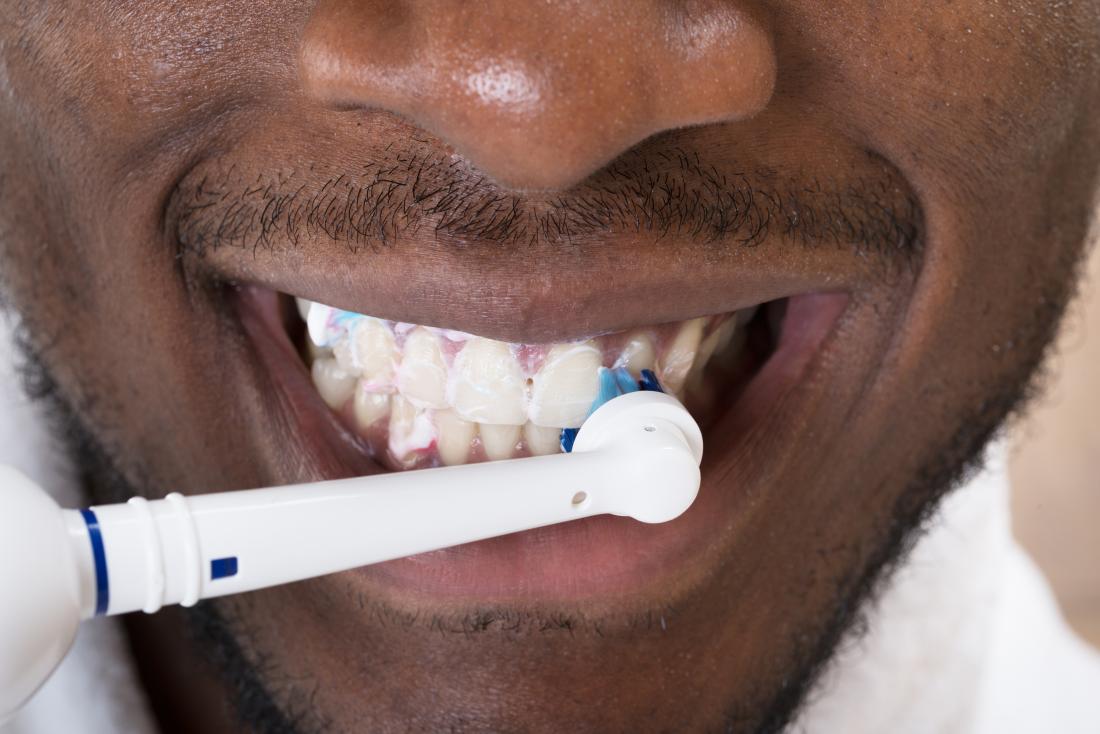Tooth sensitivity is a common and treatable condition. A 2013 study found that one in eight people who visited dental practices experienced sensitive teeth.
In this article, we explore some home remedies for sensitive teeth and the science behind them. We also cover causes and prevention of tooth sensitivity and when to see a dentist.
Oil pulling

Oil pulling may help reduce gum disease and tooth sensitivity.
Oil pulling with sesame or coconut oil may help reduce tooth sensitivity.
Oil pulling is a traditional Ayurvedic practice originating from India, which involves swishing oil around the mouth for several minutes before spitting it out.
The results of a 2009 study suggest that sesame oil pulling may reduce the symptoms of gum disease, which dentists refer to as gingivitis. A pilot study from 2015 also supported this practice, showing that daily coconut oil pulling may reduce plaque formation and markers of gingivitis.
The potential benefits of oil pulling for gingivitis may, in turn, reduce tooth sensitivity. Research suggests that tooth sensitivity is more common among people with gum recession that results from gingivitis.
Guava leaves
Chewing guava leaves or using a topical gel containing guava leaf extract may help reduce tooth pain and sensitivity.
A 2017 review of the health benefits of guava leaves notes that extracts rich in guava flavonoids have the potential to soothe toothache due to their pain-relieving, anti-inflammatory, and antimicrobial properties.
Clove gel
People have long used clove oil as a folk remedy for toothache. Research suggests that there is more to this than just tradition.
A 2006 study compared clove gel with topical benzocaine, which is a gel that dentists often use to numb a person’s gums before inserting needles. The results indicated that clove gel might be as effective in relieving needle pain as benzocaine gel.
Applying clove gel or oil to the gums may help reduce tooth sensitivity and pain. However, scientists need to conduct more research into this use of clove gel to confirm its benefits.
Garlic
Garlic is a traditional remedy for a range of health conditions. One use of garlic in folk medicine is to treat toothache.
Chewing on a piece of garlic briefly produces a compound called allicin. The authors of a 2011 study concluded that allicin has antimicrobial properties and may help kill bacteria that can lead to oral diseases, such as Streptococcus mutans.
The buildup of S. mutans around the teeth and gums can lead to tooth decay, which may worsen tooth sensitivity. Fighting these bacteria may slow down this process and lessen tooth sensitivity.
Saltwater rinse
Using a saltwater rinse as a mouthwash is another way to fight bacteria in the mouth and improve oral hygiene.
In a 2017 study, researchers found that a saltwater rinse may be as effective as a chlorhexidine mouthwash in the reduction of dental plaque.
To make a saltwater rinse, add half a teaspoon of salt to 8 ounces of warm water. Then swish the salt water around the mouth several times before spitting it out.
Capsaicin gel
Capsaicin is the spicy substance that occurs naturally in chili peppers. Although capsaicin can cause burning when a person applies it to their skin or gums, it may also reduce pain.
The authors of a 2011 review note that the topical application of capsaicin can help relieve some types of pain. Scientists are not sure exactly how this works, but they believe that capsaicin may numb nerve fibers, making them less able to deliver pain signals.
Applying capsaicin gel to the gums may alleviate pain from sensitive teeth.
Turmeric
Turmeric is a yellow spice and an Ayurvedic remedy for reducing inflammation. Turmeric contains curcumin, which may help relieve pain.
A small 2014 study found that a turmeric plant extract was as effective as ibuprofen in relieving pain from knee osteoarthritis.
A person can try making a paste by mixing turmeric and water, then rubbing it into their gums to help reduce tooth pain and sensitivity. However, there is not yet any scientific research to support this use of turmeric.
Fluoride

A person can reduce the risk of tooth cavities by using a fluoride toothpaste.
Using dental products containing fluoride can reduce the risk of cavities and may also help minimize tooth sensitivity.
A 2013 review concluded that most fluoride preparations reduce tooth sensitivity when people use them alongside desensitizing treatments.
Many forms of fluoride treatment are available that are suitable for daily use, including:
- toothpaste
- gel
- mouthwash
Desensitizing agents
Desensitizing toothpaste contains agents that make dentin less permeable. Dentin is a hard, porous tissue that lies beneath the layer of enamel in all teeth.
When dentin is less permeable, this means that it is more difficult for liquid to pass through it. Reducing the permeability protects the nerve underneath, which helps decrease tooth sensitivity and pain.
Desensitizing dental agents include:
Using a desensitizing toothpaste containing potassium is one option for people with sensitive teeth.
In an in vitro study from 2006, researchers applied oxalate extracts from rhubarb and spinach to dentine discs that they took from human molars. The results suggested that these extracts may help reduce tooth sensitivity.
Common causes
Teeth can become sensitive when enamel, their protective top layer, becomes worn down.
When enamel wears down, the dentin underneath can become more permeable, allowing liquids and gases to pass through it more easily.
Below dentin is a tissue called dental pulp that contains many nerve endings and blood vessels. When substances pass through dentin to reach these nerve endings, a person may experience pain. Drinking hot or cold liquids and chewing can trigger this pain.
The following can all wear down enamel and lead to tooth sensitivity:
- gingivitis, which is gum disease that results from plaque buildup
- decay
- tooth whitening
- excessive teeth brushing or brushing too hard
- eating acidic foods
- grinding or clenching the teeth
A 2013 study paper reported an association between tooth sensitivity and both gum recession from gingivitis and at-home tooth whitening.
Prevention tips
People can help protect the enamel on their teeth and prevent tooth sensitivity by:
- brushing the teeth twice daily with a fluoride toothpaste
- flossing once a day
- taking breaks from whitening the teeth
- limiting the consumption of sugary, starchy, and acidic foods
- limiting alcohol intake
- wearing a mouthguard at night to prevent teeth grinding and clenching
- seeing a dentist regularly
- quitting smoking
When to see a dentist

A dental examination may be necessary to identify the cause of severe tooth sensitivity.
If a person experiences ongoing or severe tooth sensitivity and pain, they should see their dentist for an examination.
Depending on the cause and severity of the sensitivity, a dentist may recommend:
- using a fluoride gel or desensitizing agents
- a filling
- a crown
- an inlay or onlay
- a surgical gum graft
- a root canal
Summary
Many people experience tooth sensitivity and pain, which can result from the gradual erosion of tooth enamel. Research suggests that some home remedies can help treat tooth sensitivity.
Good oral hygiene is the best way to prevent tooth decay, gum disease, and the development of sensitivity.
People with severe or ongoing sensitivity should see a dentist for a checkup. Depending on the cause, a dentist can offer in-office therapies to treat tooth sensitivity.
Let’s block ads! (Why?)





